|
Videodance_6 in Townhouse Gallery,
Kairo, Egypt
Videodance_6, the SCCA program curated by Barbara Borčić for
TransDance Festival, initiative of HaRaKa Dance Research,
was screened two times this year (May 13 and October 19) in the
Townhouse Gallery, Kairo, Egypt.
Our colleague Angela Harutyunyan, Armenian curator and theorist living in Kairo, attended the screening in October and has sent us her observations:
Six Videodance Pieces from Slovenia at Townhouse Gallery in Cairo
It has almost become a cliché that the international world of contemporary art, that is the world of globetrotting artists, curators and managers alike, seems at times too small, and it is no longer a thrilling rare surprise to meet an old German friend in a Central Asian exhibition in the United Kingdom. Nevertheless, there is still a level of excitement present when one finds out that a friend or a close colleague or an acquaintance is presenting a show or giving a talk to which one can attend, due to the geographical proximity. This sense of familiarity breaks the alienation produced by at times anonymous and impersonal global art market. This was precisely the feeling that enveloped me when I, an Armenian studying in Manchester and living in Egypt, saw the program of Townhouse Gallery's October activities in Cairo, which included a curated screening of Slovenian video dance works by Barbara Borčić. Apart from the fact that I have many colleagues in Slovenia who I have been collaborating with for a few years now, I have visited Ljubljana in the past, and knew Barbara Borčić through our long-term collaboration in Yerevan. Hence, my visit to "Videodance" program was not simply a result of curiosity and/or professional interest but a sense of returning home, or to that which is familiar and known.
The program was presented by Egyptian performer Adham Hafez and his organization HaRaKa, which focuses on research, production and representation of modern dance and movement. It included six works by prominent Slovenian video artists, performers and film-makers, mainly produced throughout the 1990s. In Slovenia videodance, which is a dance-performance, produced solely for video or a live performance documented by video, was a widespread practice to which many artists adhered to. Without going too deep into the interpretation of these pieces produced by Zemira Alajbegović and Neven Korda, Sašo Podgoršek, Ema Kugler and others, I will mention two outstanding aspects in this unique genre. Firstly, these works are interdisciplinary collaborations between artists, performance and film-makers which refuse to fit into a single category or a descriptive paradigm, informed by media specificity. Secondly, they show a unique submergence of video with performance in which the the performers' bodies and movements, but also the viewers' embodied experience while viewing these works, is largely shaped by technologies. In this, there is no prior body proceeding its technological representation but the very experience of the body is itself shaped by these very technological means of representation.
But there is another layer - the layer of reception which is always context-specific and is shaped by the viewers' subjectivities, historical and cultural circumstances, believes and traditions. For the urban and social context of the Townhouse Gallery in Cairo, situated in the most bustling downtown area, in a neighborhood full of car mechanics' shops and shisha cafes, it is always a challenge to negotiate between its agenda to produce social and cultural change through art and the religious conservative sensitivities of the local communities and government censorship. Hence, the small excerpt of a topless dance by two women performers in Sašo Podgoršek's and Iztok Kovač's work of 1996, was something that can not be commonly seen in Cairo, where the self-censorship of nudity in contemporary artistic production is considered a common-sense practice. However, even without this stretching of the boundaries of what is and is not allowed in Egypt, the videos' aesthetics of bodily movement, dance, music and technological presence opened up a space for an articulation of a discreet aesthetic language, which had the potential to create ruptures within the banality of the everyday. This was evident from the impact which the Videodance program left upon the audience. Perhaps, the most subversive and radical impact of the work of art is its trace, which never disappears, even in the face of banality and chaos of the everyday, with its struggles, hardships and normative social performances of prevailing modes of identities.
Angela Harutyunyan
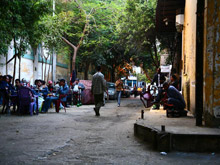 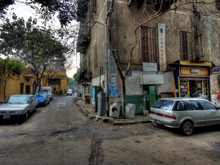
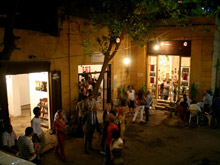 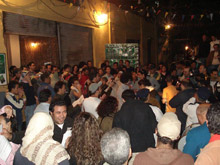
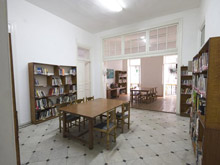 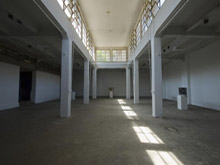
The context
The interdisciplinary festival under the title Connections has been initiated and organised by the HaRaKa, dance research program and Adham Hafez, its leader, working in-between performances, sounds, installation& texts. Each edition of the festival is focused on a specific topic, this time - as TransDance :1 - on Transdisciplinary approaches on dance. As a partner, SCCA-Ljubljana collaborates with the 82-minutes programme of videodance works entitled Videodance_6 and curated by Barbara Borčić.
Links
Media coverage:
Announcement:
|

